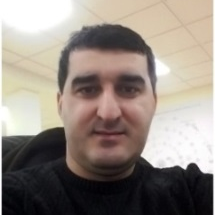Recent Advances in Graphene Epitaxial Growth: Aspects of Substrate Surface Modification Using Coatings
A special issue of Coatings (ISSN 2079-6412). This special issue belongs to the section "Surface Characterization, Deposition and Modification".
Deadline for manuscript submissions: 31 May 2024 | Viewed by 1366
Special Issue Editor
Interests: thin films technology; atomic layer deposition (ALD); magnetron sputtering; pulsed laser deposition (PLD); bismuth ferrite; aluminum nitride; silicon carbide; graphene; perovskite heterostructures; surface modification; interfaces of materials; functional materials; topological materials; spintronics
Special Issue Information
Dear Colleagues,
Due to the features of the energy spectrum of carriers, graphene exhibits specific electrophysical properties, in contrast to other two-dimensional systems. Graphene has high hardness, thermal conductivity, and charge mobility, which makes it a promising material for use in a variety of applications, especially in the field of nanoelectronics. For practical applications, additional efforts are required to understand the thermodynamic processes of graphene growth and to move towards controlled and low-cost approaches for the scalable production of graphene-based products. In addition, understanding the growth mechanism of graphene will allow us to improve its quality in terms of overlay orientation, domain size, coverage, and uniformity. On one hand, it seems to be a very simple material, and on the other hand, it is very difficult to combine a two-dimensional material that is one atom thick with a three-dimensional world of devices such as electrodes, substrates, heterostructures, etc. This, in turn, affects graphene and its properties. Currently, epitaxial graphene is obtained with various technological methods, including gas-phase techniques, physical transport, plasma, etc., but the quality of the layers obtained and the sizes of the domains are not high enough to mass produce epitaxial layers on a substrate while retaining the unique properties of a two-dimensional carbon allotrope. Thus, it is necessary to comprehensively focus on the mechanisms of growth and the formation of graphene on the substrate surface and the effect of the substrate itself on the properties of epitaxial graphene.
This Special Issue will collect articles on the following concepts:
- Promising methods of preparation and mechanisms of self-organization of epitaxial graphene.
- The role of substrate surface modification for graphene epitaxy: surface engineering, the creation of growth centers, etching, the suppression of inhomogeneous segregation, structure transformation, and the use of buffer layers.
- The role of catalysts in the efficiency of the nucleation of large graphene domains.
- Growth bilayer graphene with arbitrary twist angles.
- Theoretical aspects of studying the properties of epitaxial graphene.
- Epitaxial graphene-based heterostructures.
- Superconductivity in graphene epitaxial coatings.
- New ideas and knowledge of mechanisms for obtaining graphene with unique properties (multilayer graphene, suspended graphene, free-standing graphene, two-layer graphene with magic angles, proximity effect, magnetic properties of graphene, etc.).
Dr. Shikhgasan Ramazanov
Guest Editor
Manuscript Submission Information
Manuscripts should be submitted online at www.mdpi.com by registering and logging in to this website. Once you are registered, click here to go to the submission form. Manuscripts can be submitted until the deadline. All submissions that pass pre-check are peer-reviewed. Accepted papers will be published continuously in the journal (as soon as accepted) and will be listed together on the special issue website. Research articles, review articles as well as short communications are invited. For planned papers, a title and short abstract (about 100 words) can be sent to the Editorial Office for announcement on this website.
Submitted manuscripts should not have been published previously, nor be under consideration for publication elsewhere (except conference proceedings papers). All manuscripts are thoroughly refereed through a single-blind peer-review process. A guide for authors and other relevant information for submission of manuscripts is available on the Instructions for Authors page. Coatings is an international peer-reviewed open access monthly journal published by MDPI.
Please visit the Instructions for Authors page before submitting a manuscript. The Article Processing Charge (APC) for publication in this open access journal is 2600 CHF (Swiss Francs). Submitted papers should be well formatted and use good English. Authors may use MDPI's English editing service prior to publication or during author revisions.
Keywords
- graphene coatings
- 2D materials
- epitaxial graphene
- graphene growth technology
- buffer layer
- substrate surface modification





